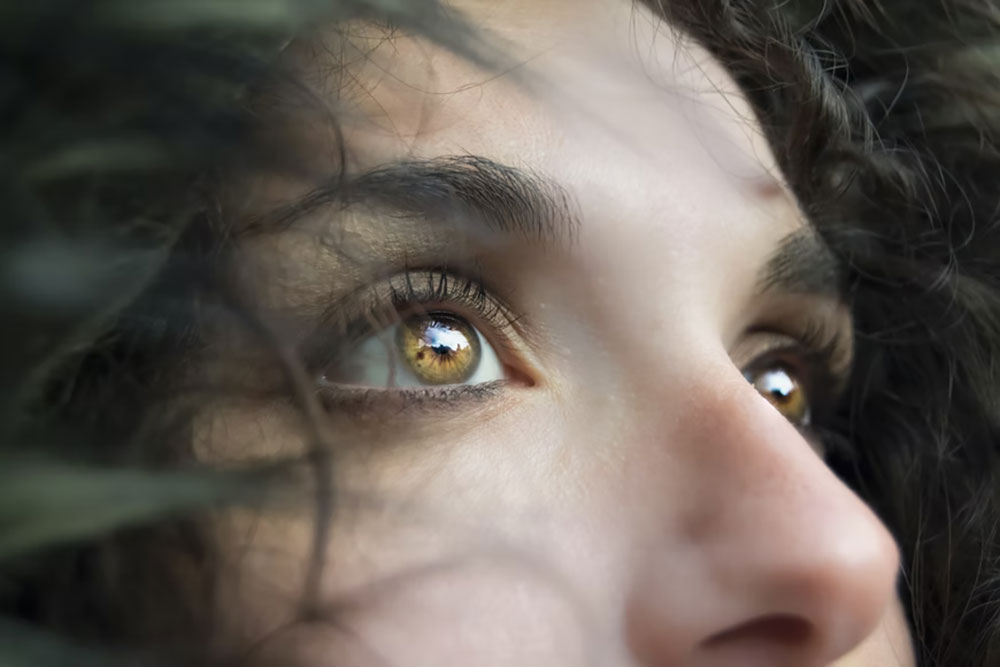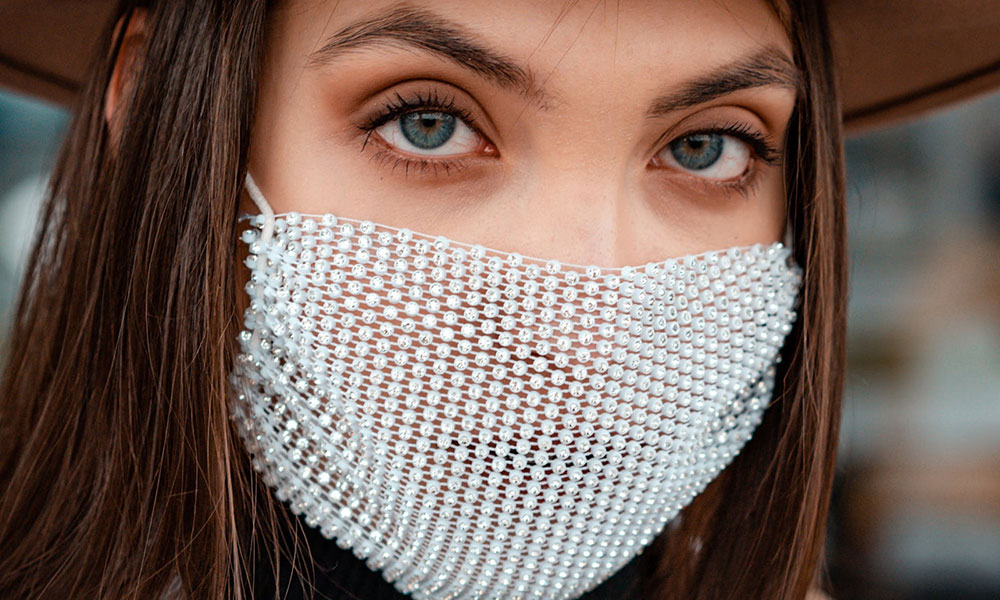Blue Eyes With Brown Eyes Makes Hazel Eyes
Beauty is in the eye of the beholder and few eyes are as striking as hazel eyes.
Whereas brown and even blue eyes are relatively common, hazel is something of a rarity and often described as different colors, but why is that?
View in gallery 
From green to blue to dark brown, the hazel eye color isn't pinned down to a single hue, making it a fairly unique and interesting mutation.
This is also why some people believe hazel-colored eyes change color depending on the person's emotions. While this would be amazing, it's quite literally a trick of the light.
(Doesn't make those of us with dark brown eyes any less jealous, though!)
That said, hazelcan change over time. It's all thanks to human genetics, which we'll explore shortly.
We'll also take a closer look at hazel characteristics, what sets them apart from other human eye colors, and how people with this eye color supposedly differ from others.
What Causes Hazel Eyes?
View in gallery 
For many of us, our first foray into human genetics is a simplified take on dominant and recessive genes, oftentimes about hair or eye color.
We learn that brown eye color is dominant, while blue eyes are recessive. By this logic, two blue-eyed parents couldn't have a child with light brown eyes, much less a child with hazel or even the more mysterious grey eyes.
Turns out, many factors determine human eye color, including mutation and light.
Just as you might see a red-haired baby born to a pair of blondes or brunettes, you'll find family members with different eye colors.
Here's the science behind hazel eye genetics:
- Eye color inheritance isn't determined by one or two traits, but by at least 16 different genes. This means that if you have blue or brown eyes and the right genes, you might end up with a bouncing hazel baby.
- There's actually no hazel, green, or blue pigment present in the iris (the colored part of the eye.) Eye color is dependent on the amount of melanin present, the same pigment that determines skin color.
Hazel eyes appear as they do because they have more melanin in them than green or blue eyes but less melanin than brown eyes. However…
- People with hazel eyes aren't necessarily born this way! White, non-Hispanic babies with blue eyes can develop more melanin as they age, leading to hazel or, in other circumstances, green and brown eyes.
- The way hazel appears to change color isn't a parlor trick. It's actually due to Rayleigh scattering, the same optical phenomenon responsible for the blue sky. Combined with the lower concentration of melanin, the way light scatters within the iris reveals not just a single natural eye color, but varying wavelengths of green, blue and brown.
- This has led to the hazel eye color being referred to as the "eye color chameleon" by scientists.
- The chameleon effect is emphasized by the way pupils contract. Pupil size affects how light reflects in the eye and how we perceive this light, giving credence to the myth that hazel eyes change with someone's emotions.
- Much like when we wear something to "bring out our eyes," hazels can appear to reflect the colors around them—a great reminder for anyone interested in the best hair color for hazel eyes!
- Finally, hazel, blue, grey, and green eyes are all a result of genetic mutation. Brown eyes, the most common eye color, are believed to have been the standard up until some several thousand years ago.
What Makes Them Unique?
View in gallery 
Hazel-colored eyes are a vibrant and beautiful display of color, but they can be hard to describe compared to other eye colors. Green hazel eyes, brown hazel eyes, blue hazel eyes—all applicable descriptors.
If you're in need of a little inspiration, here are a few facts on the uniqueness of hazel eyes:
- Since eyes are a focal point of our faces, we all want to describe our eye color in fun, fantastical ways. People with hazel eyes are no exception. Their eyes are multi-colored, commonly described as a mix of green, blue, and dark brown with flecks of light brown or gold woven in between.
- No two iris patterns are the same. Hazel eyes are the most obvious example of this after heterochromia, a condition where someone has two different colored eyes.
- That said, they tend to have a dominant color: green or brown. Depending on the concentration of pigment in the iris, it wouldn't be inaccurate to say that some people with hazel eyes also have green or brown eyes.
- And while hazel eyes don't change colors, they can appear to do so according to someone's mood.
As we mentioned previously, our pupils contract—not just in reaction to light but to our emotions as well. We see this in all eye colors, but it's more apparent in hazel.
- Many people with hazel eyes have a brown ring around the outer part of their pupils, adding to their air of mystery. In some cases, this ring is a form of central heterochromia.
- Meanwhile, in others, this ring is more like a burst-like pattern, exaggerating the low concentrations of melanin. This differs from green eyes, which usually appear more solid in color.
- Although there's no uniform color, they take their name from the hazelnut shell.
How Rare Are Hazel Eyes?
View in gallery 
Humans essentially exist on a spectrum, with some traits being less common than others.
Here's what we found out about hazel eyes rarity, plus a few other cool facts:
- According to the World Atlas, only about 5% of the world's population has hazel eyes, making them extremely uncommon.
Meanwhile, blue eyes account for about 8 to 10% of the world population whereas brown eyes dominate at a whopping 79%.
- However, this doesn't make hazel the rarest eye color. Grey eyes (3%), green eyes (2%), violet eyes as a result of albinism (<1%), and people with heterochromia (<1%) rank as the rarest.
- The hazel eye color commonly appears in people of Brazilian, North African, Spanish, or Middle Eastern descent.
- That said, you'll find hazel eyes across Caucasian populations. In fact, this population group gained the vast majority of eye color mutations, save a handful of exceptions.
- The rarer an eye color, the more desirable they're thought to be. For this reason, hazel eyes often lead in popularity polls, second to only green eyes in this one example!
- Likewise, due to their rarity and natural beauty, hazel is a common color choice for contact lenses.
- Although quite rare, the hazel eye color is quite common in Hollywood. For example, celebrities such as Angelina Jolie, Jude Law, David Beckham, Ryan Reynolds, Ben Affleck, Zendaya, and Lady Gaga all have hazel eyes.
- As another nod to pop culture, hazel eyes have been the topic of several songs over years. "Behind These Hazel Eyes" by Kelly Clarkson and "Hazel Eyes" by The Darkness are two famous examples!
Superstitions, Beliefs, and Opinions On Hazel Eyes
View in gallery 
The eyes are the window of the soul.
Whether this applies to a person's eye color too remains to be seen. Whether you're superstitious or just interested in cultural perceptions on eye color, check out these factoids below:
- Two words are said to describe people with hazel eyes: fun-loving and outgoing.
- If you happen to have hazel eyes, then you'll be happy to know you're also believed to have excellent social skills, a cheery disposition, a great sense of humor, and deep, meaningful friendships.
- You might also find that people think of you as independent and resourceful (if a little stubborn.) You know how to get things done on your own and prefer not to ask for help.
- On the flip side, you're happy to help others. You're trustworthy and reliable. If a loved one ever needed help, you're happy to lend a hand.
- On that same note, hazel-eyed individuals have a passion for adventure. They enjoy taking risks and may have one or two extreme hobbies, like snowboarding or surfing.
- That said, they're quite responsible. Despite their risk-taking ways, people with hazel eyes always think things through before leaping into danger.
- Funnily enough, this doesn't extend to internal conflict. Those with hazel eyes would rather avoid a fight or argument, a trait they picked up from a young age.
- People with hazel eyes supposedly have a greater sensitivity to pain. Ouch!
- Given how many well-known celebrities have this eye color, creativity and the arts go hand-in-hand with hazel eyes.
- Elegance and mystery: another two traits said to be associated with hazel eyes. Given the mystique and rarity of the color, there is undoubtedly something alluring about those with hazel eyes.
- They also have a great sense of style! For instance, the best eyeshadows for people with hazel eyes are any shade similar to the colors of their eyes, such as gold or chocolate brown.
Conclusion
The range of colors that make up our characteristics is fascinating. Eye color in particular is something that has always captivated us and few colors are as stunning as hazel.
From their unique mutations to their rarity across the globe, hazel eyes stand out in a sea of browns and blues.
Does someone you know have hazel eyes? Do you? Let us know what you love about them in the comments below.
Source: https://www.thecoolist.com/hazel-eyes/